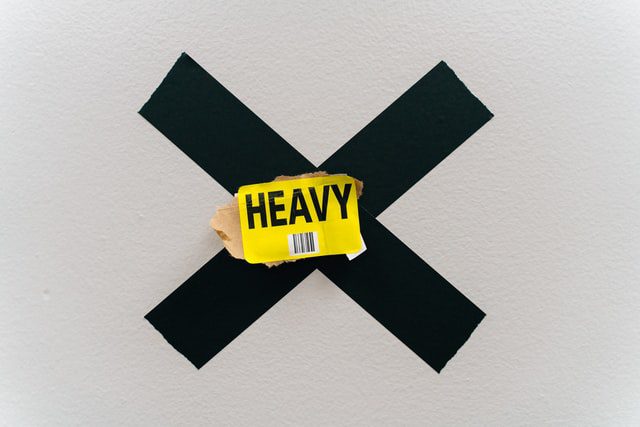As the world spends more time working from home, consistency in shipping and labeling is crucial for the safety and well-being of those handling the packages as well as the recipients. No matter what product you are sending out, packaging and labeling matter.
Technology here plays an integral role in making this possible.
Smart technologies like Cloud computing, Internet of Things (IoT), automation, etc. are simplifying how labeling is done.
The technological integration in smart labeling provides customers ready access to detailed product information with a simple touch of a button. Companies, on the other hand, can benefit from traceable information of the product, enabling them to monitor it from manufacturing to the shelf.
When it comes to the pharmaceutical industry, the advancements in biologics and speciality drugs require thermal-sensitive packing. This further promotes the use of smart labels consisting of temperature control functions.
The following article talks about the technological impact on packaging and labeling, what is chemical labeling, and some do’s and don’ts of chemical labeling.
Technological impact on the labeling sector
With advancements in RFID (radio-frequency identification labels) and barcode labeling, the labeling process and inventory management are benefitting a lot.
From reduced costs of inventory management to automated labeling, smart technology is redefining packaging and labeling.
If we talk in the context of chemical labelng, technology like automation and IoT implementations, can help manufacturers restructure the labeling process and eliminate redundancies in the available data sources. It can further help them save time and costs while adhering to labeling compliance policies.

Source: Unsplash
Conventional or traditional labeling processes are not only complicated but difficult to use and expensive.
Today, several pharma products require certification information, toxicity specifications for chemicals, Kosher, or Halal practices.
Modern chemical labeling processes require modern software-as-a-service (SaaS) solutions that offer scalability and agility to the business. It must also align with the changing business needs. Such solutions can help manufacturers to reduce the hours consumed in managing product labeling by increasing accuracy, capturing process efficiencies, and reducing waste.
More than ever, businesses are now embracing cloud-based labeling applications.
The growing demand is driven by a host of benefits offered by the cloud – simplified maintenance and support, mobility, reduced team involvement, and streamlined global deployment.
Here, businesses should eye enterprise labeling solutions that are purpose-built for cloud-based deployments to ensure increased print performance and flexibility.
Similar to the cloud, IoT and automation too, have a profound impact on the labeling sector.
IoT, for example, can connect devices and share information with the users. Consumers can now, with a simple click of a button, check the freshness of the food items stored in their refrigerators.
IoT-enabled smart labels can simplify the tracking of products even at a remote location and at an affordable price.
In chemical labeling too, smart labels can benefit both the consumer and the handlers or distributors of the package. Consumers can check for details like expiration date of the package with a simple bar code scan. Smart labels can also increase the level of security in the packaging of a particular drug kit.
What’s important about getting Chemical Labeling right?
A properly completed and applied chemical label will let you know:
- What is in the package?
- a signal word, such as “flammable” or “danger”
- a hazard statement, such as the greatest risk
- precautionary statements that include what to do to get it off your skin or what to do if the product becomes airborne
- the supplier information
If you get a bottle of liquor as a Christmas gift and the bottle breaks, you will just be losing your present, but the delivery driver may be facing a highly flammable substance that can put his life in danger. Proper chemical labeling may seem excessive as long as nothing spills, but if something goes wrong, protections should be easily visible.
What should you do when Labeling to ship?
If you’re transmitting anything that could be hazardous in the event of damage or exposure to heat or pressure, take care to make room in the marketing imagery on the packaging to create appropriate space for safety. If you need to leave one side of the container blank for a hazard label, do so.
Be vigilant about safe packaging from the container out. Yes, your internal packaging will need any required OSHA labels. Additionally, the exterior packaging box or bag will need to include the same safety labels and hazard warnings. Finally, the exterior container will require the same data. Whether your products are going to a business or a private home, it only takes one uninformed person to incorrectly open a container and put themselves at terrible risk.

Source: Unsplash
Also, consider any need for tamper-resistant markings and tags as well as tipping notifications to reduce the risk of a dangerous vapor event. If you work with chemicals that become hazardous when exposed to air, your facility is likely set up to reduce risks to your employees and region. Reduce this hazard risk with a tamper-resistant opening and detailed instructions.
What should you not do when creating your Packaging Designs?
Carefully study the rules and regulations to transmit your products via road, air or train. Be aware that there are many flammables and potentially explosive products that can’t be shipped by train or plane.
If you’re sending out large containers of a chemical that will be incorporated into other products, consider including a warning on your label about potential transportation risks. While the chemistry of the next step in their process may negate the risks of an air or train transport, the inclusion of this text could trigger a review of shipping requirements and could avert a disaster.
We can all hope that skilled professionals are going to be the ones unloading and opening our products at the end of the shipment, but hazards abound when transporting materials. Your product may become a critical danger before the product even gets to the final destination, so label appropriately for anyone handling the items.








